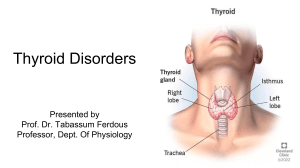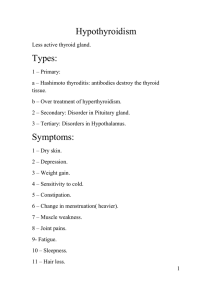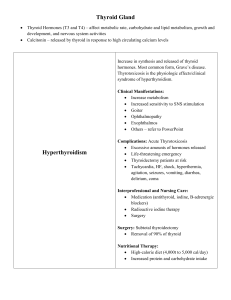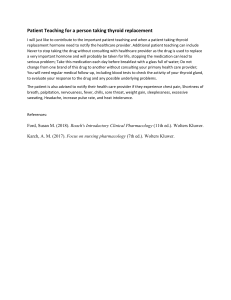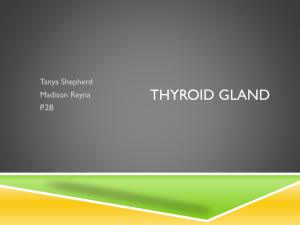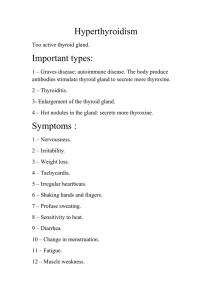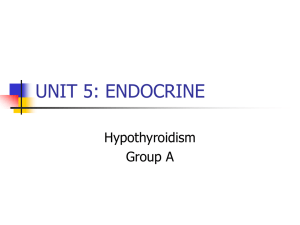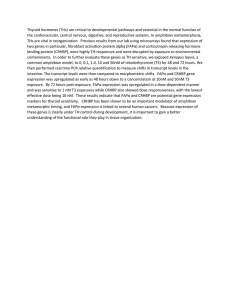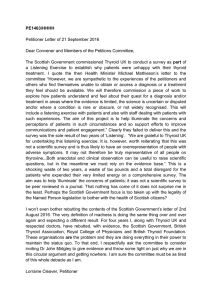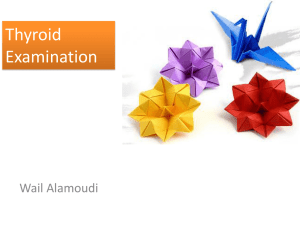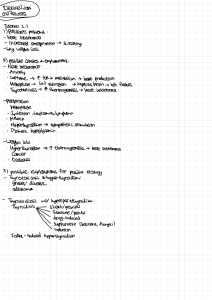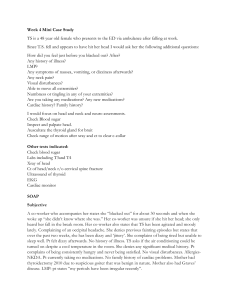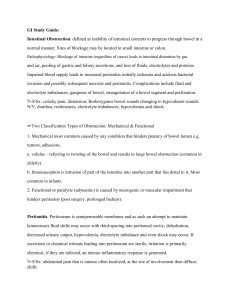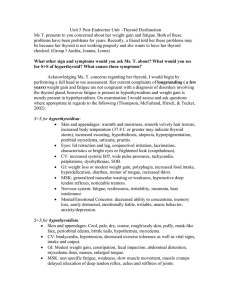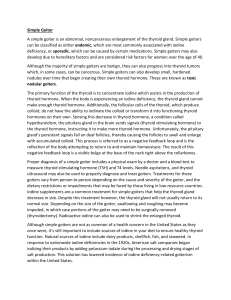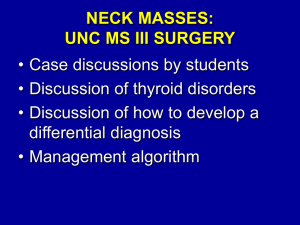HW7 1. Iodine is essential to the production of thyroid... blood are excreted through the kidneys or taken up by...
advertisement
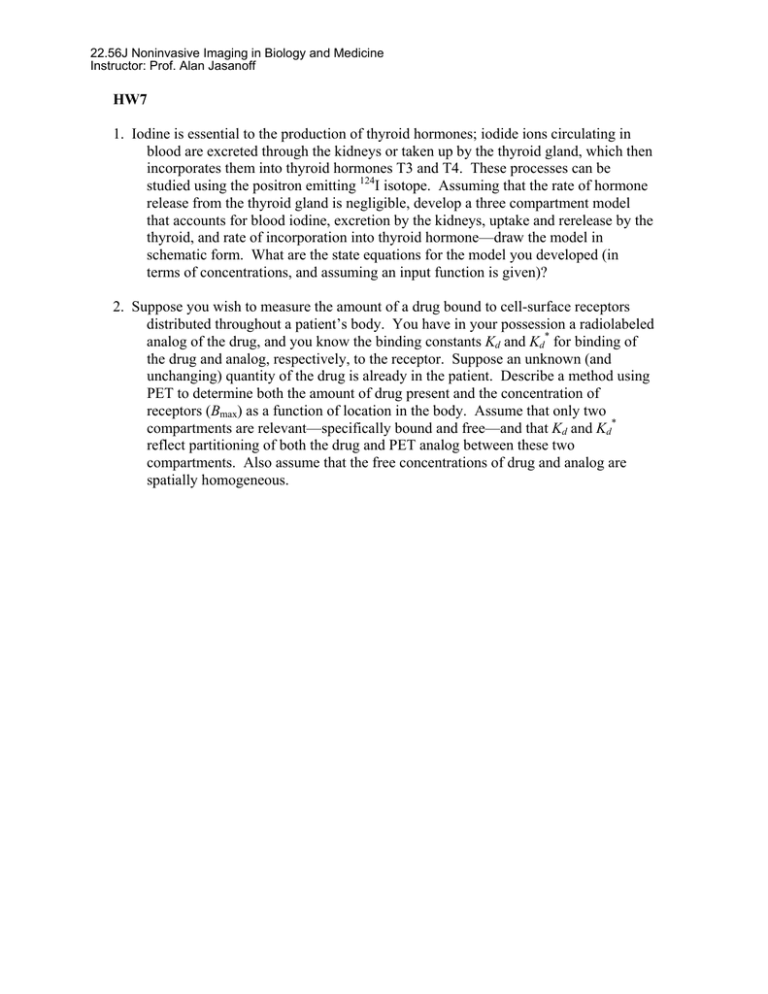
22.56J Noninvasive Imaging in Biology and Medicine Instructor: Prof. Alan Jasanoff HW7 1. Iodine is essential to the production of thyroid hormones; iodide ions circulating in blood are excreted through the kidneys or taken up by the thyroid gland, which then incorporates them into thyroid hormones T3 and T4. These processes can be studied using the positron emitting 124I isotope. Assuming that the rate of hormone release from the thyroid gland is negligible, develop a three compartment model that accounts for blood iodine, excretion by the kidneys, uptake and rerelease by the thyroid, and rate of incorporation into thyroid hormone—draw the model in schematic form. What are the state equations for the model you developed (in terms of concentrations, and assuming an input function is given)? 2. Suppose you wish to measure the amount of a drug bound to cell-surface receptors distributed throughout a patient’s body. You have in your possession a radiolabeled analog of the drug, and you know the binding constants Kd and Kd* for binding of the drug and analog, respectively, to the receptor. Suppose an unknown (and unchanging) quantity of the drug is already in the patient. Describe a method using PET to determine both the amount of drug present and the concentration of receptors (Bmax) as a function of location in the body. Assume that only two compartments are relevant—specifically bound and free—and that Kd and Kd* reflect partitioning of both the drug and PET analog between these two compartments. Also assume that the free concentrations of drug and analog are spatially homogeneous.
